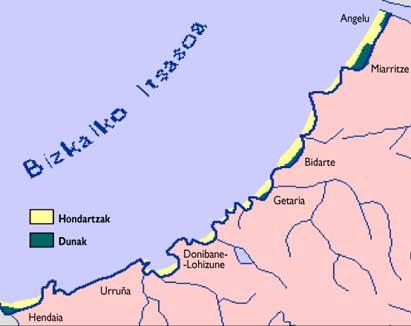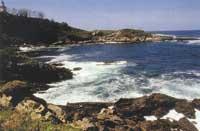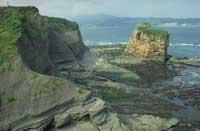Basque Coast (X): Cliffs of Lapurdi
1996/01/01 Estonba Mintxero, Mikel Iturria: Elhuyar aldizkaria
As has been mentioned frequently, from the mouth of Atturri to the cliffs of Cape San Martin de Biarritz, the coast of the Basque Country is continuation of the sandy coast of the Landes. However, from now on, the coast of Lapurdi, like that of Hego Euskal Herria, is formed by rocky and macabre cliffs, cut by narrow tributaries.
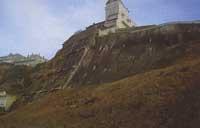
Although the origin and characteristics of all of them are very similar, several differences can be distinguished between these cliffs. These are the differences discussed below.
From Biarritz to Getaria
From Cape San Martin de Biarritz to Getaria, we will find the youngest cliffs in the Basque Country. To a large extent, these calcarenite cliffs belong to the Miocene of the Tertiary.
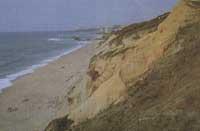
In this stretch of the coast and especially in the area of Biarritz, the differential erosion is very remarkable, which makes the coast full of islands, rocks, capes and beaches.
Later, on the cliff of Bidarte, erosion is more uniform, so the coastline is much more straight.
When analyzing the abrasion platform, it is observed that it does not have large surfaces and usually appears covered with sand.

Although we do not find striking elements in the physical environment, the situation of the cliff ecosystem is completely different. Especially in Bidart, the representatives of this ecosisterna are in a very good state of conservation, although in the upper part of the cliffs there are more and more urbanization processes. This is happening all along the coast of Lapurdi, and the most notable influence of this process is the disappearance of the aerohaline tent in some places and its contribution to a minimum in others. Fortunately, in the upper part of the cliff of Bidarte there are still large widths. However, it is harder to know how long this situation will last.

Alongside Bidarte's work, the situation of Biarritz's is completely different. There was no pre-planning at the time of the urbanization of the municipality, so the constructions have been taken to the ends of the cliffs. This has been a serious problem in Biarritz and the erosion of the sea has endangered some neighborhoods of the town.
To solve this specific problem, that is, to stop the erosion of the sea, the concrete cliffs have been filled, which has caused the total destruction of the ecosystem.
From Getaria to Hendaia
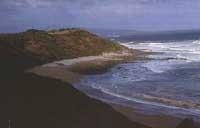
The cliffs of Getaria, and in general from here to Hendaia, present a certain difference with the cliffs that we have just analyzed. As for the age of the peoples themselves, they are older than the previous ones, specifically the Upper Cretaceous. In addition, the structure of the cliffs themselves is different, being the main structure of Flysch, formed by limestone and marl.
To these two main agents must be added the organization of strata, which in turn are affected by erosive agents. As a result of these impacts, the area has extensive abrasion platforms, numerous beaches and almost vertical cliffs.

The most spectacular geomorphological elements are the bay of San Juan de Luz and the cape of Santa Ana de Hendaia, two clear examples of differential erosion, but with a remarkable difference between the two. While the materials of the bay of San Juan de Luz are more erosionable than those of the nearby cliffs, those of Cabo de Santa Ana have reduced mobility. Therefore, Santa Ana is ahead of the environment and in it you can see numerous rocks, islands and similar elements (Dunbarrias, Loia, etc. ). ).
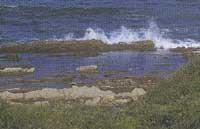
In addition, the structure of FIych in this region is pink. The explanation of this phenomenon lies in the high degree of oxidation of sediments, probably due to a warmer climate during the transport of the sences, to the greater amount of oxygen.
From an ecological point of view, intertidal and cliff ecosystems are represented. However, as a result of the wild urbanization of recent years, it has also been built at the last end of the high cliffs, which has led to the disappearance of living communities. The exceptions to this general phenomenon are the natural refuge of Abbadia in Hendaia and the cliffs of Exanzabal.
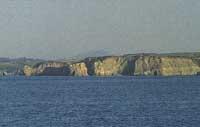
Both areas are managed by the entity "Conservatoire de Pespace littoral et des rivages lacustres". In a unique geological framework, they have ensured the survival of representatives of all typical ecosystems, especially in Abbadia. However, this is not the only lesson we should take from that region. In fact, they have stated that a balance can be achieved between traditional agricultural activities and the protection of nature, becoming a clear example of this. Unfortunately, these beautiful aspects are in grave danger of being an isolated natural island, surrounded entirely by an urbanized area with lack of environmental sensitivity.


Gai honi buruzko eduki gehiago
Elhuyarrek garatutako teknologia




